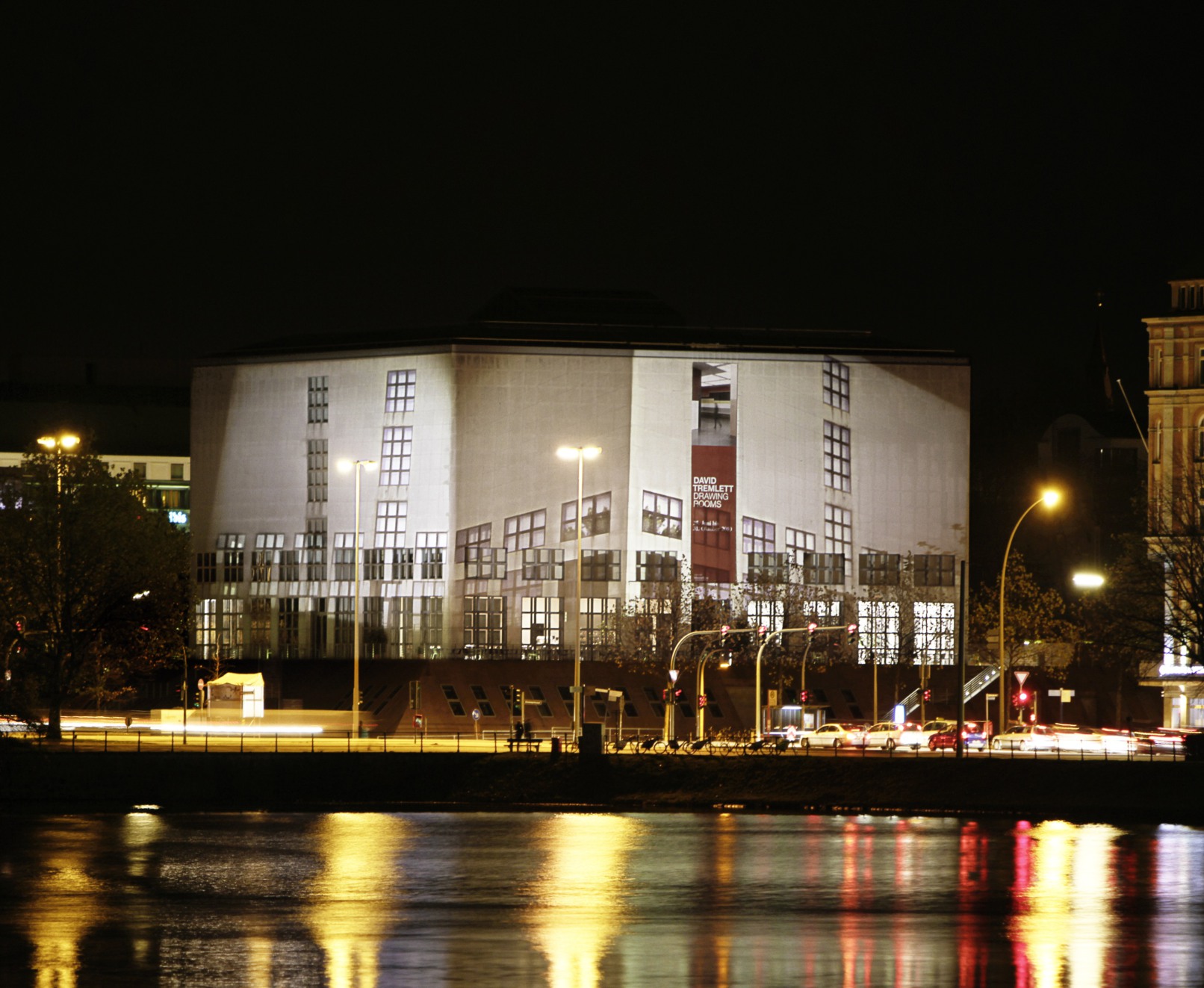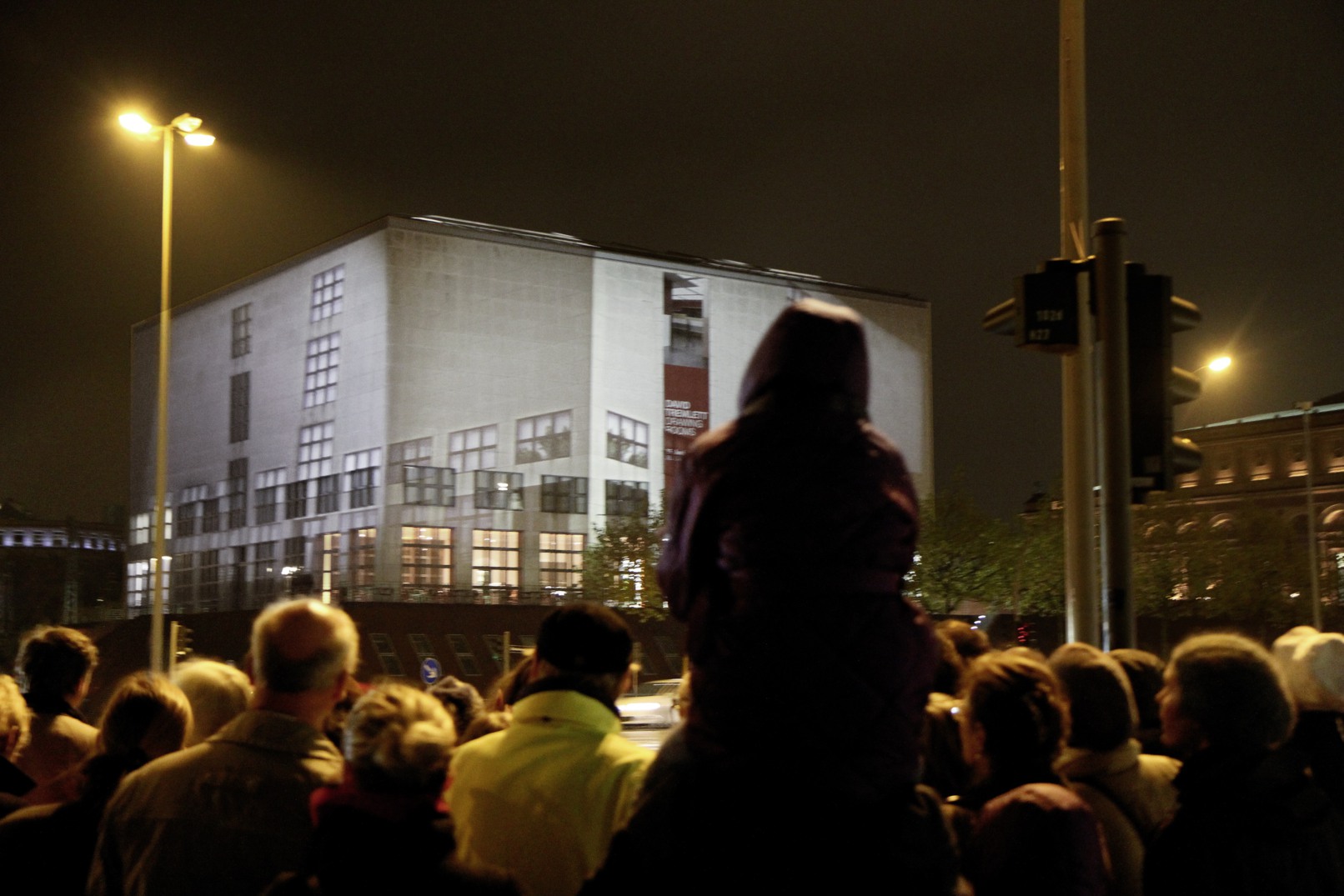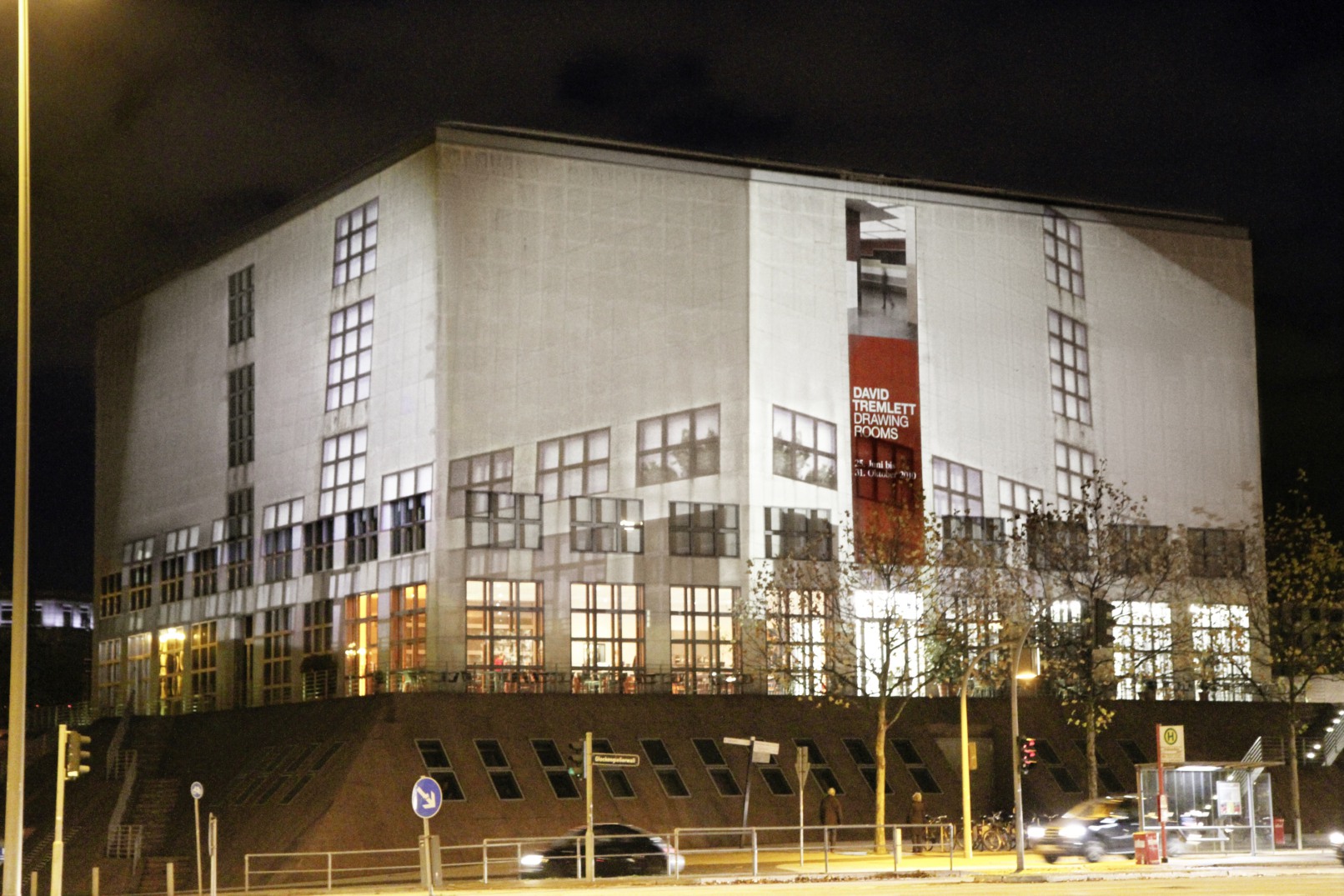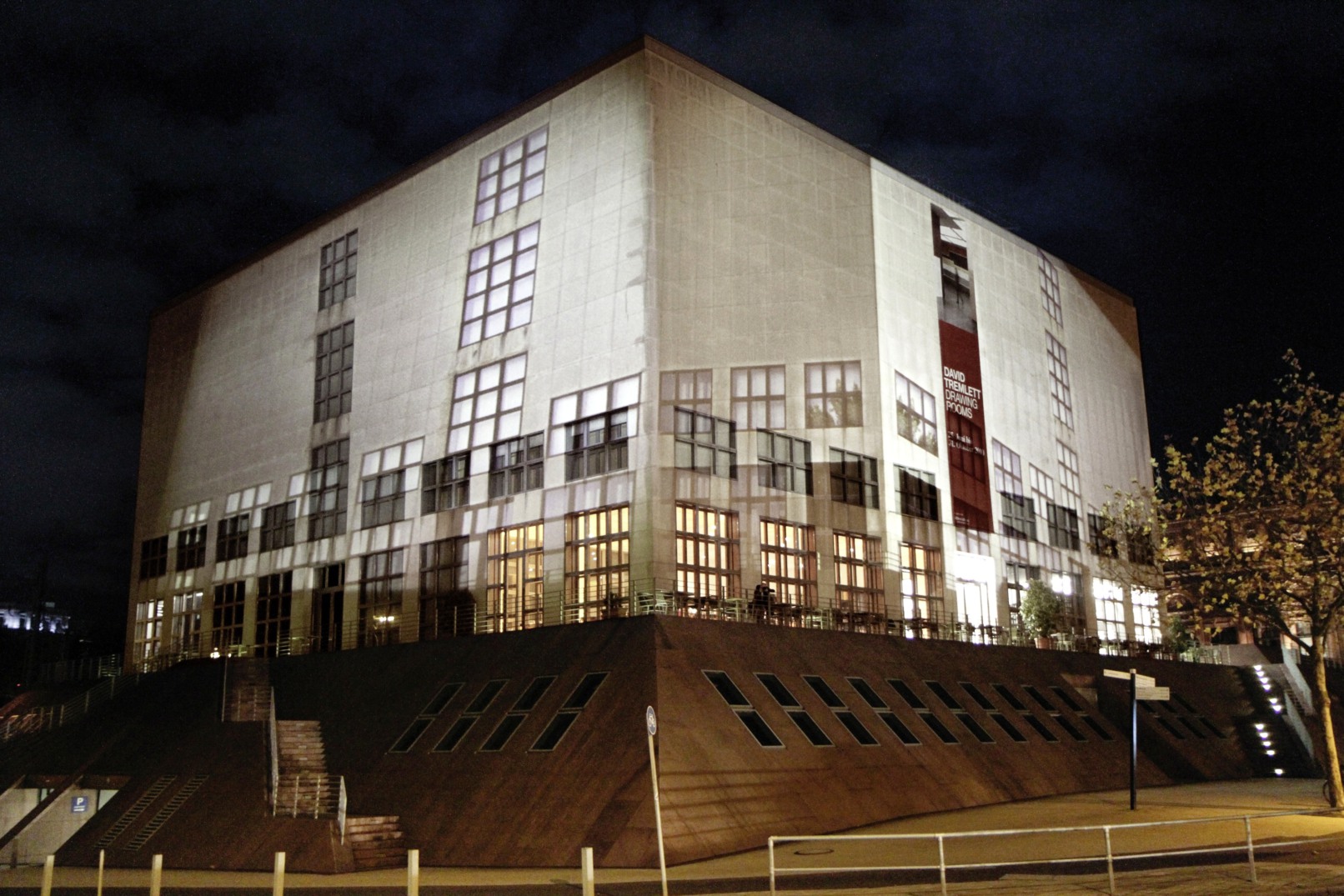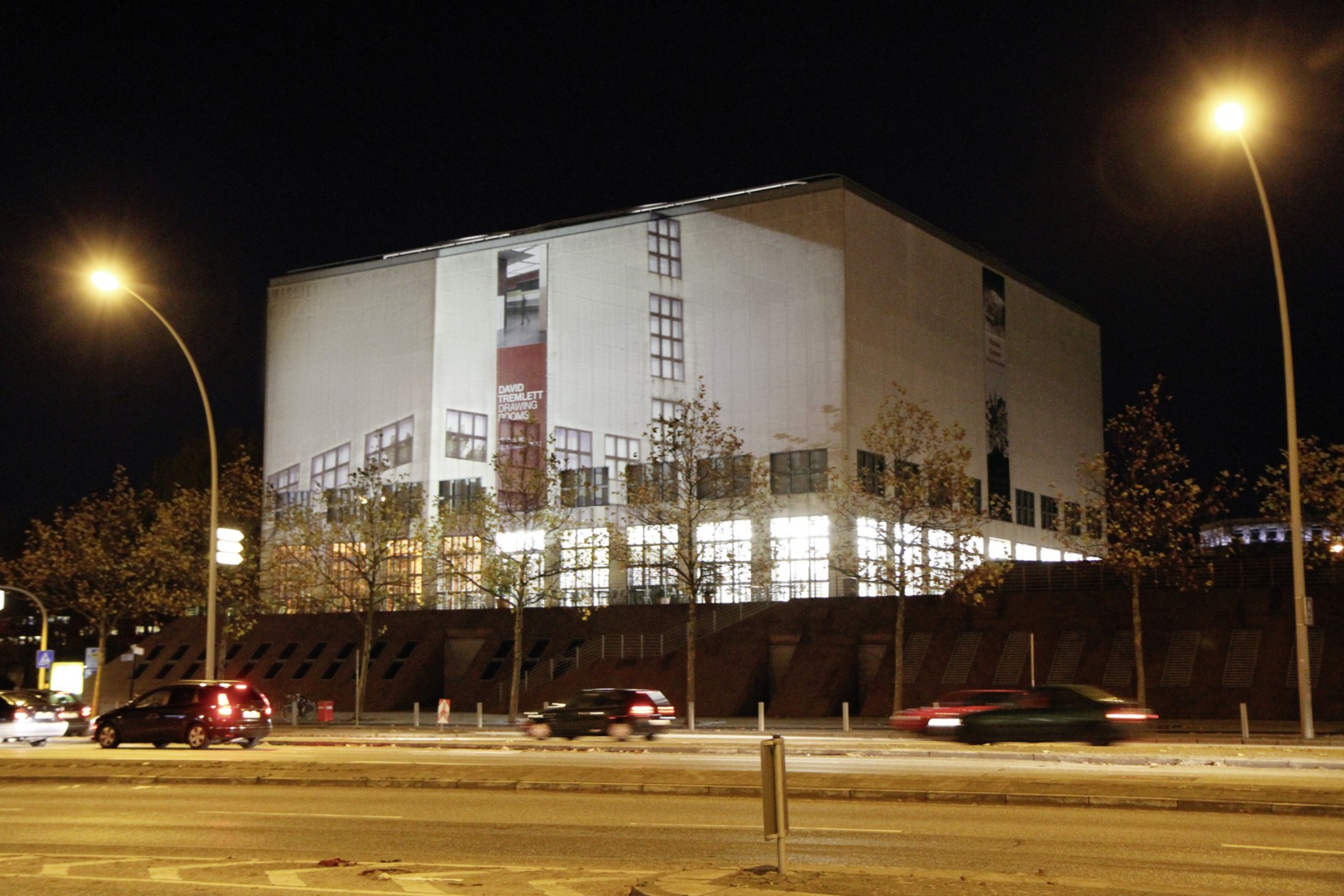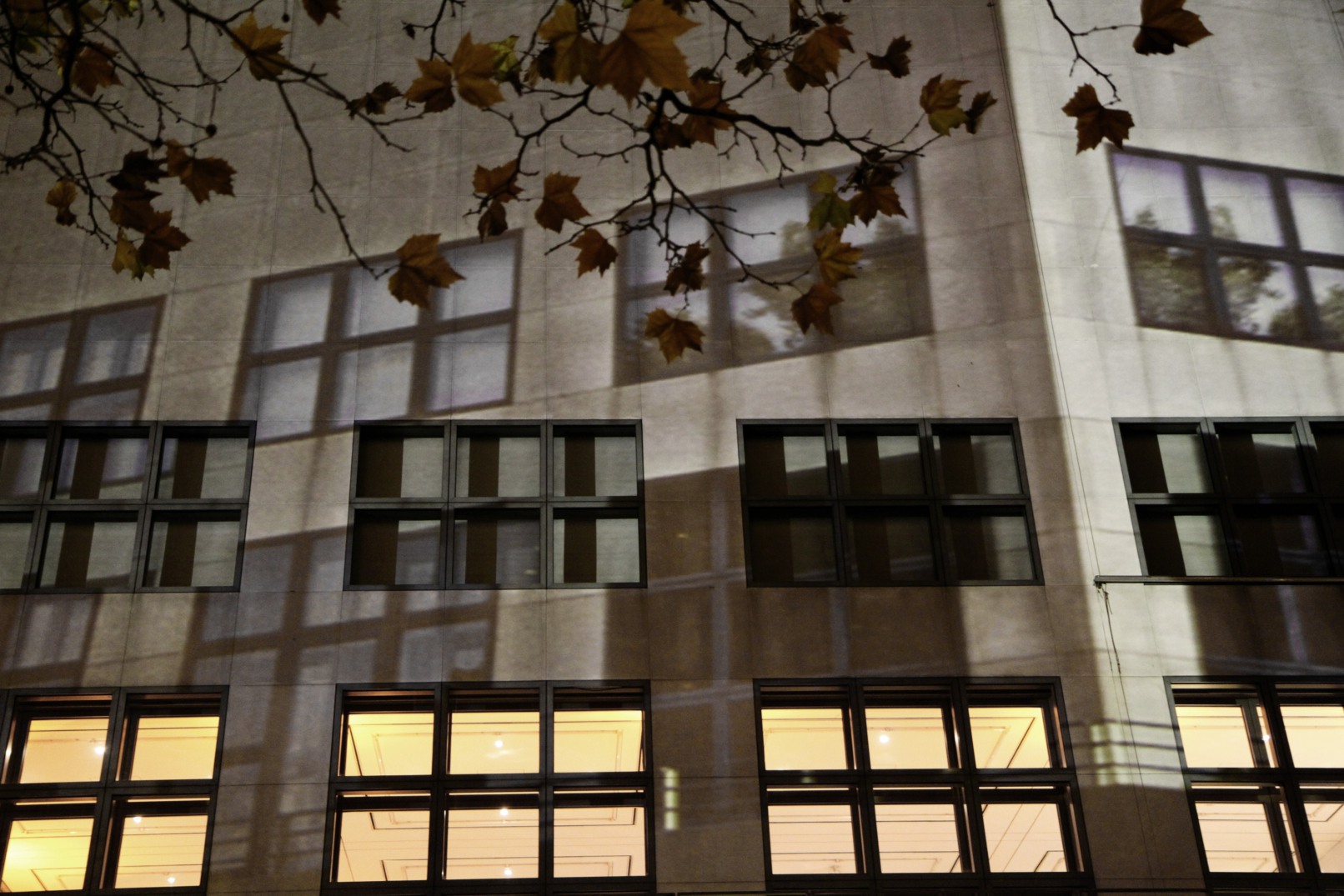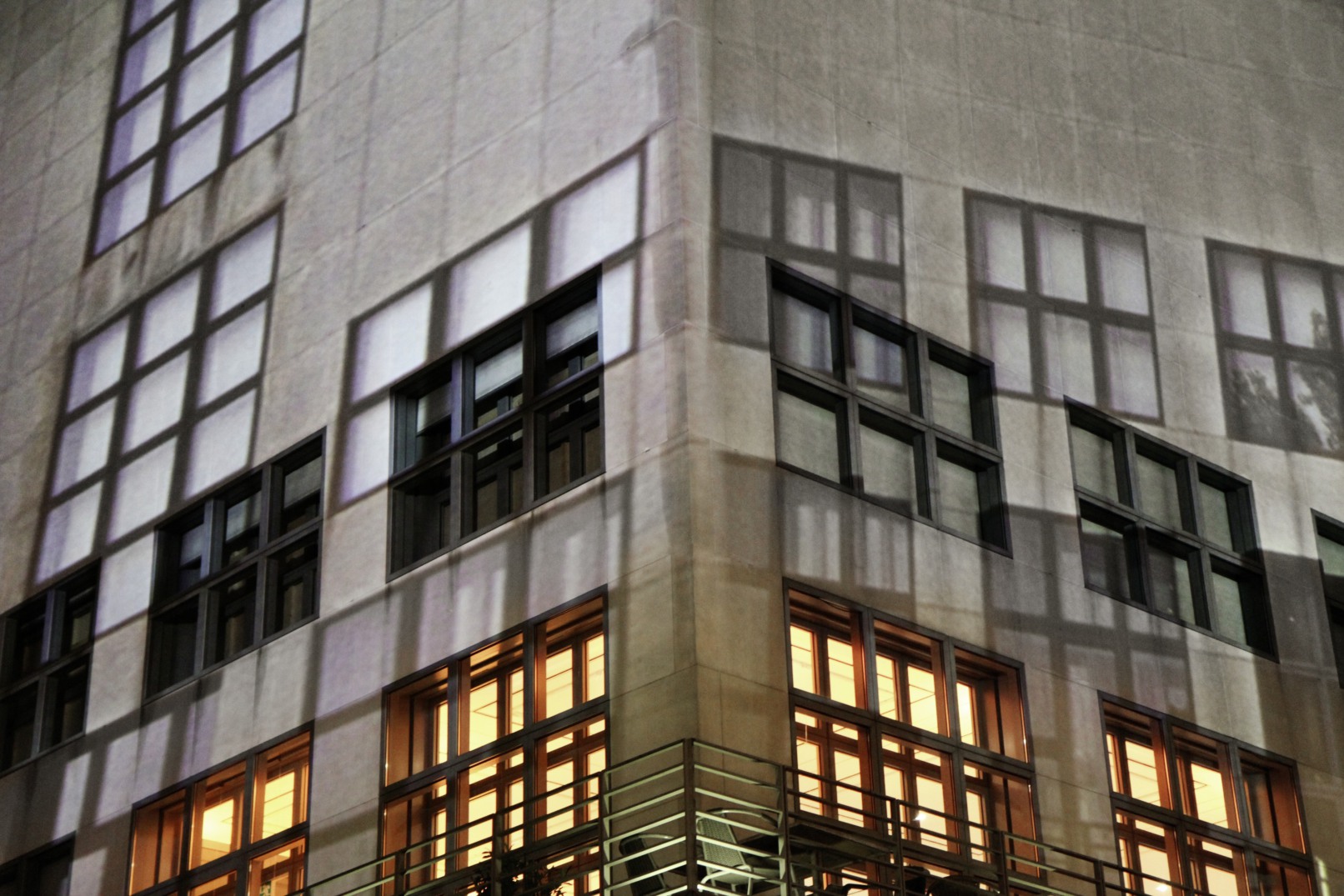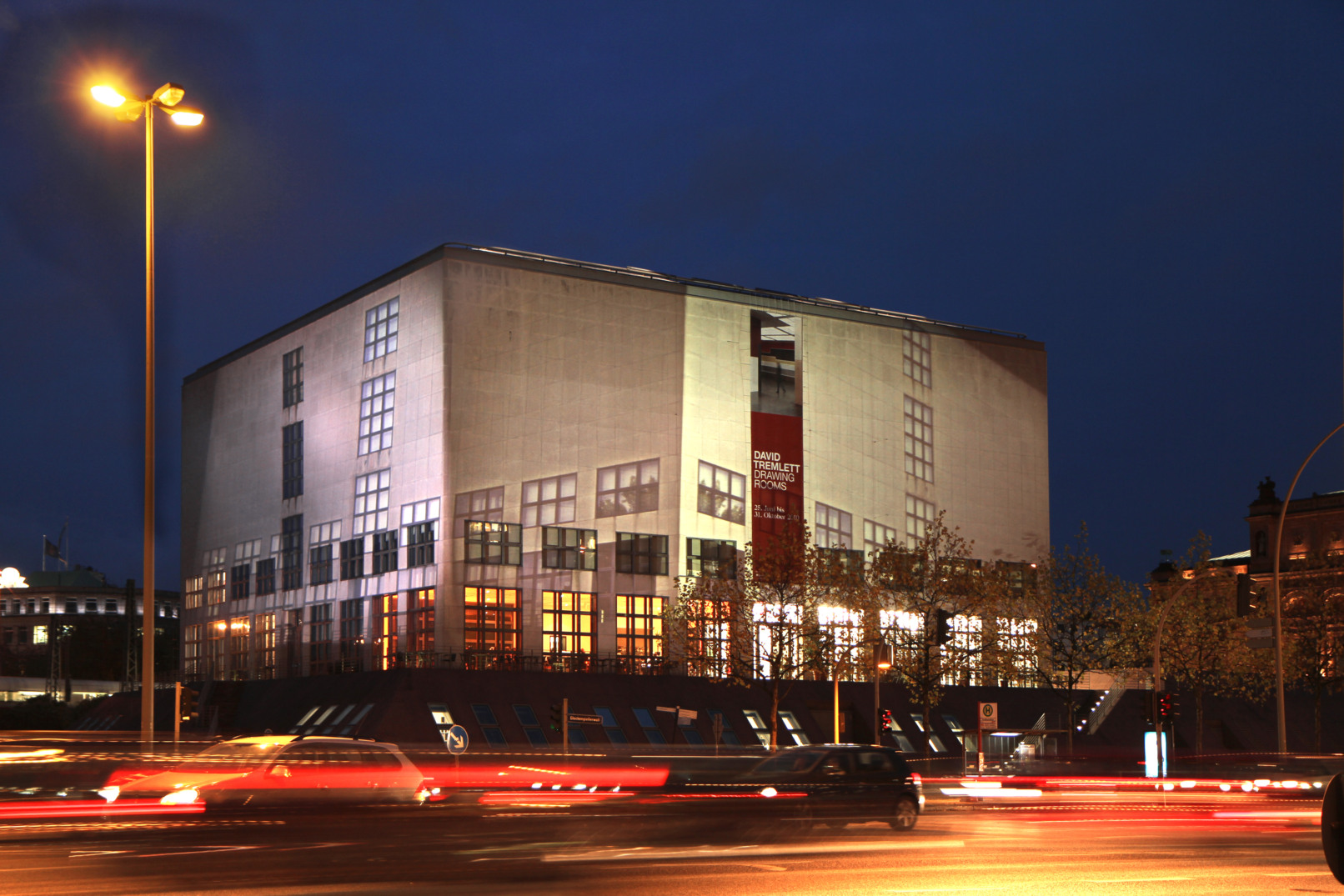Presence II
Info
With a double slide projection, the Galerie der Gegenwart is transformed into a deconstructivist sculpture at nightfall. The prominent cube of the building is destabilized by a shift in perspective, mutating into a hybrid volume whose appearance varies greatly depending on the viewing direction. The superimposition of light and substance in this setting leads to unexpected visual disturbances.
Double Presence
Anamorphosis versus Perspective
In October 2010 the Galerie der Gegenwart, the Hamburg Kunsthalle’s imposing white cube, was transformed by Hinrich Gross’s light installation into a disconcerting, decon- structive sculpture. In allusion to the grammatical tense known in German as Futur II (“future perfect” in English), Gross named his work Gegenwart II (“Present Perfect”).This linguistic hybrid of the future and past expressed something of the visual ambivalence of his optical experiment.The museum’s location on some high ground opposite Lake Alster offered both—as its name suggested—an ideal platform for his work and a substantial projection surface, not least because the building, with its clearly defined architecture based on geometric squares and its bright facade with horizontal and vertical strip win- dows, represents a landmark that is visible from much of the city.
However, for the period of the light installation this familiar sight literally began to quiver and sway: in late summer, two large-scale projectors on the opposite side of the street were used to project perspectivally shifted images of the facades of the Galerie der Gegenwart onto the museum’s two main fronts.The museum, which until then had ap- peared as a pure cube, was now displaced into a multilateral, almost crystalline structure. It is not just that window strips appeared superimposed onto each other, but that the entire building was shifted out its fixed quadratic axes into a hybrid state. Much of the building’s real architecture could barely be distinguished from its virtual image, and the viewer was left with the impression of a structure that had been fundamentally destabi- lized.
Although it was a still image that was projected onto the facade, the entire building found itself in a state of constant transformation. Spectators and drivers in the streets around the Galerie der Gegenwart could change their judgements and opinions as they shifted their points of view.The superimposition of real and projected windows on top of each other, and the way the actual roof appeared to be bending forward, made any attempt at reconstructing the building’s original form genuinely frustrating—with the result that, for the period it was shown, the projection not only calles into question the building’s architecture, but also the phenomenon of perception itself.
Petra Roettig
